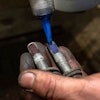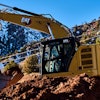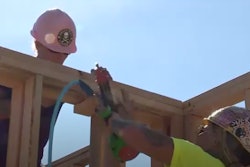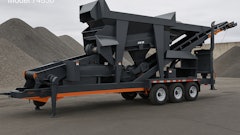The construction industry is rife with stereotypes — not the least of which is that of big burly men in hard hats and safety vests whistling at passing females on the street. While the makeup of the industry’s workforce is evolving, such caricatures are still ingrained in public memory, to the chagrin of those trying to fill critical project positions.
It’s not news to anyone that contractors in many regions of the U.S. are struggling to fill vacancies despite offering competitive wages and benefits. Unemployment may be low but there are workers out there. The problem is convincing them of the opportunities construction has to offer; overcoming negative perceptions about the jobs and their environment; and ensuring new hires get both the training they need and feel safe and welcome on your sites.
Women remain a largely untapped resource for the industry. They make up just over half the country’s total workforce, yet represent less than 10% of the more than 10 million-strong construction labor force.
Women in construction see a far smaller gender pay gap than in other industries, which should make the sector more attractive than most. Yet, there are misconceptions on both sides, plus the gender-based challenges extend well beyond communal bathrooms on construction jobsites.
Many laborer positions require being out in the elements, often in harsh conditions. This is the most visible face of the industry, and such jobs require a special kind of toughness and character. But they are only one aspect of the construction job market. To attract more workers in general, and women in particular, potential hires need to be made aware of the many opportunities open to them, and how both the jobs and their environment have changed.
Take the equipment operator. The “office” for today’s operator has changed substantially, with many newer machines offering cabs that are quieter, more comfortable and with more amenities than the average car — they’re like operator-centric, high-tech “game stations.” Potential job candidates need to be made aware of this, as well as the technology-focused jobs now found on modern jobsites.
Combating misconceptions extends to the hiring process, as well. It’s not only biased but potentially illegal to presume a female worker can’t fill a particular job that has historically been held by a male worker. Women have regularly proven themselves to be highly competent in the skilled trades, equipment operation, management, technology and other roles once given the training and the chance.
It’s also important to break down any gender biases for new hires that could create a hostile work environment. Some coworkers may have opinions that affect their willingness to work effectively with women, or any “non-traditional” members of the labor force for that matter. Diversity training can lay the groundwork for better understanding and awareness, which can go a long way toward making all workers feel comfortable and ready to remain in your employ long term.
Extending beyond the traditional labor pool means more potential to fill vacancies and keep your projects on schedule. Explore ways to reach that “other 51%” and share the news about the varied and good-paying jobs on your team.
Read more about women in the construction workforce at www.ForConstructionPros.com/21022942.




















